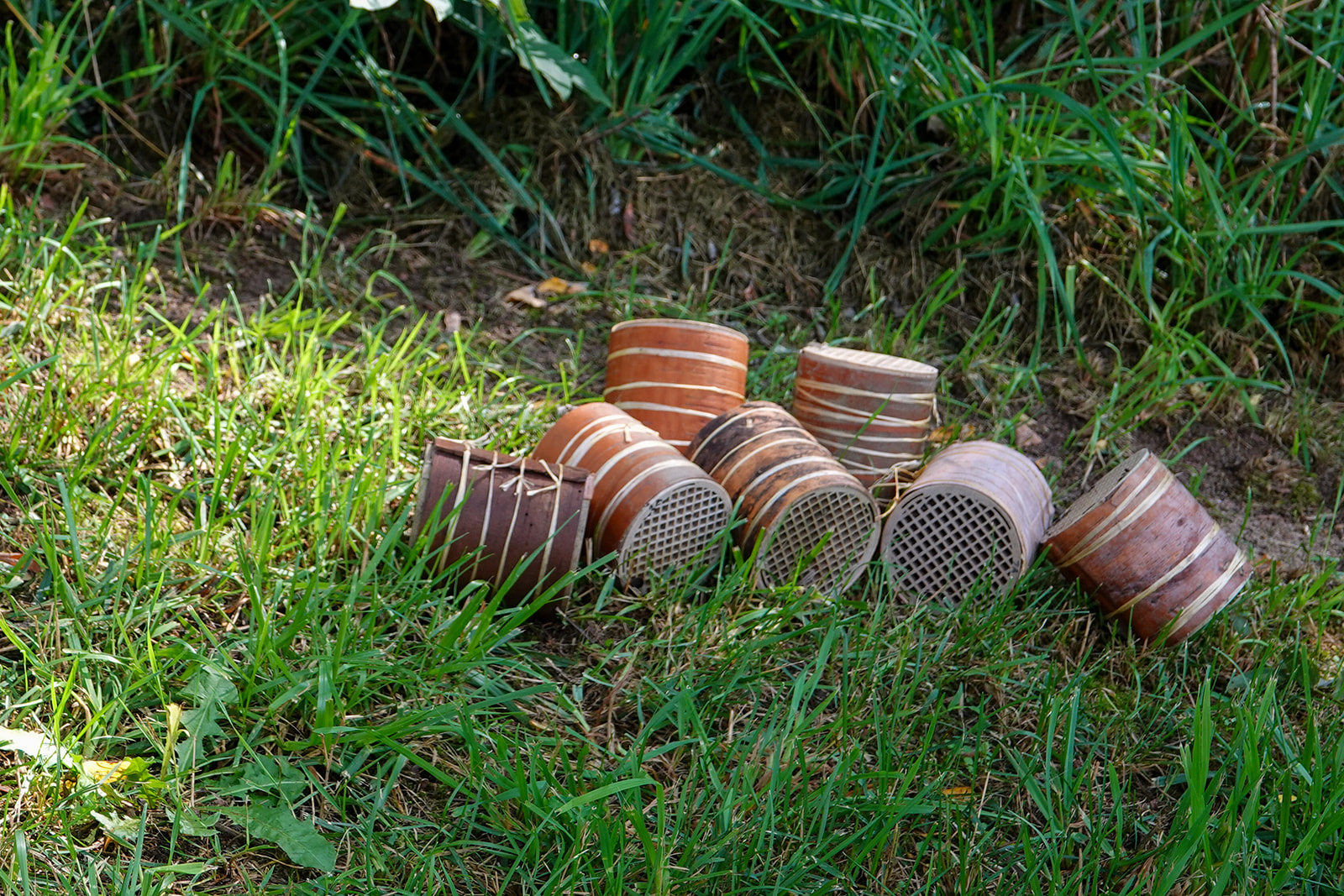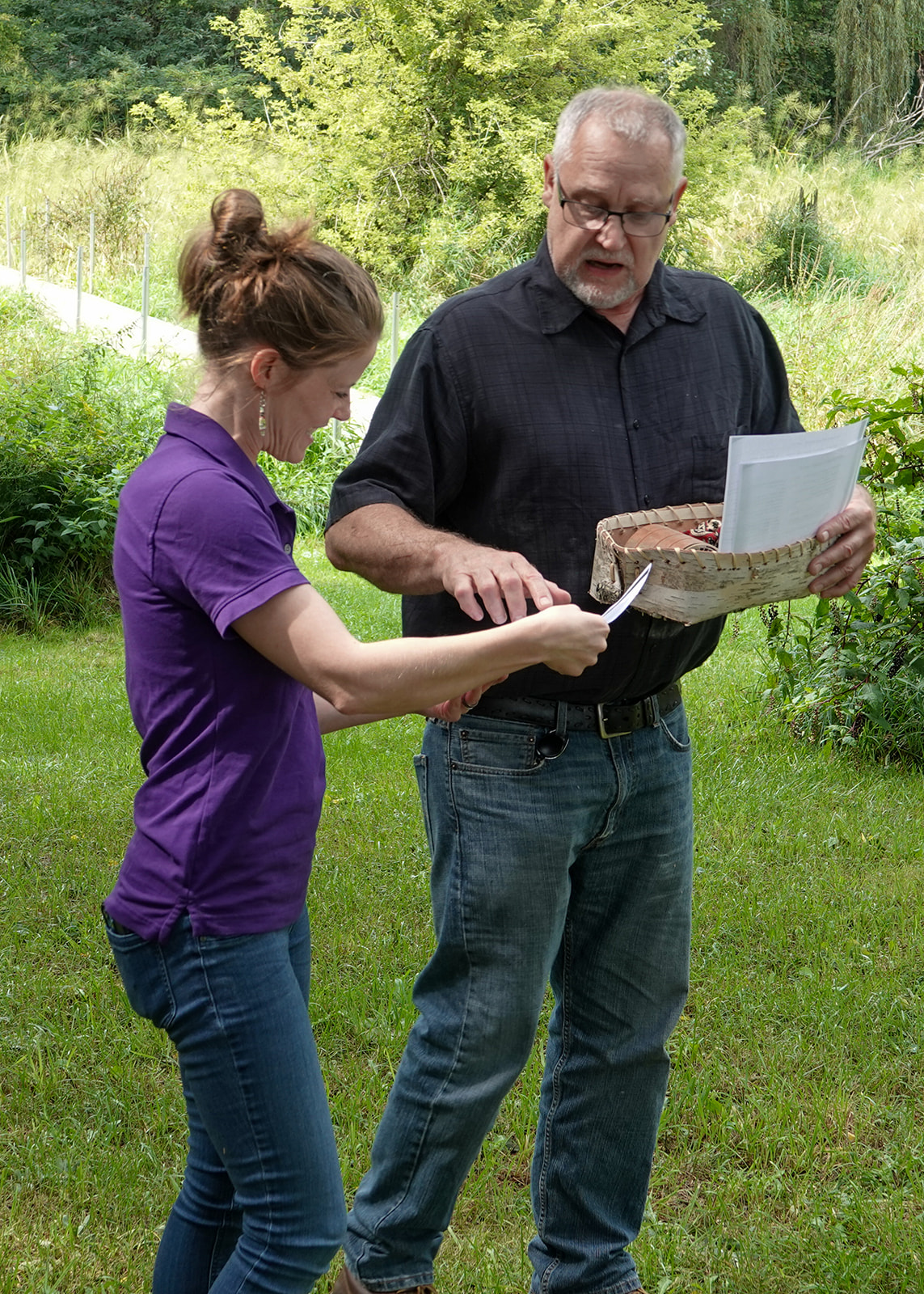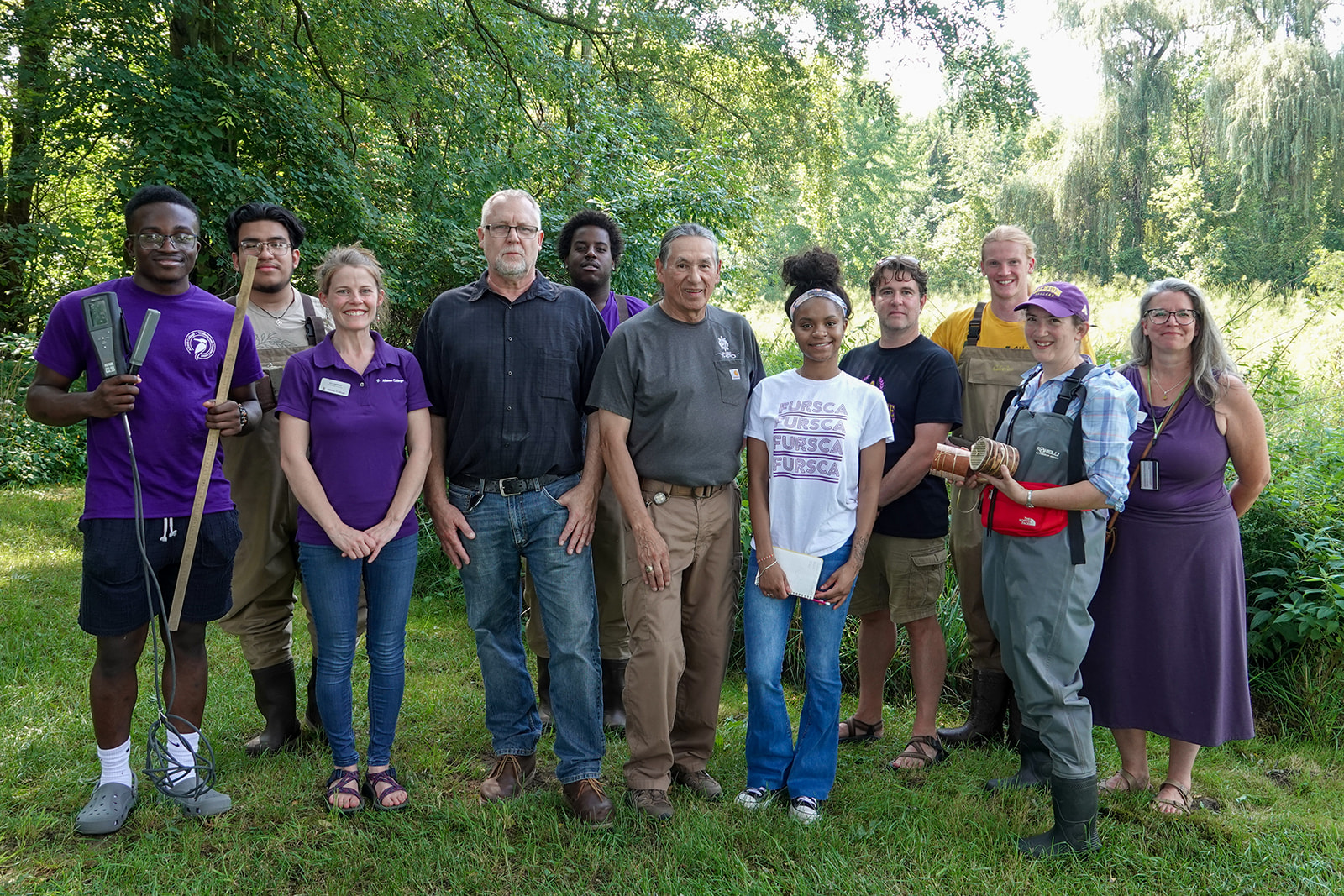NHBP and Albion College Unite to Honor Tradition
Written by Leslie McLove
“We are looking to you to help us carry our stories forward scientifically and in academia,” said NHBP Tribal Elder and Tribal Historic Preservation Officer Doug Taylor as he welcomed a group of Albion College faculty and students to the Pine Creek Indian Reservation in early September 2023.
In a dynamic fusion of science and tradition, the NHBP Environmental Department has embarked on an extraordinary journey with Albion College, which is sure to leave an indelible mark on the health of our local waterways and the preservation of our cultural heritage. This collaborative effort began in 2020 and evolved into an exploration of shared knowledge and values, all while honoring the sacred Seven Grandfather Teachings.
Taylor and Environmental Director John Rodwan co-led the project with Albion College Associate Professor of Anthropology Allison Harnish, Ph.D. and Associate Professor of Biology Abigail Cahill, Ph.D. What started as a formal land acknowledgment evolved into something far more profound—a commitment to combining NHBP’s traditional ecological wisdom with Albion College’s scientific expertise. From there, the land acknowledgment blossomed into a Wild Rice {Mnomen} restoration project.
Mnomen is more than just a grain; it’s a symbol of Neshnabék Culture, history and spiritual connection to the land. This grain was a staple in the traditional Bodéwadmi diet and was nearly eradicated due to urban, industrial and agricultural expansion. Through projects like this one, NHBP hopes to make a positive impact in restoring and preserving this sacred plant and is determined to see Mnomen flourish again.
Shared Interest in Wild Rice {Mnomen} Restoration Drives Research Forward
The partnership between NHBP and Albion College is about a genuine desire to learn from one another.
A shared interest emerged as the two groups began to compare the Wild Rice beds found along the waterways near the Pine Creek Indian Reservation and the Wild Rice beds along the banks of the North Branch of the Kalamazoo River, which runs through Albion College’s Whitehouse Nature Center and behind their football stadium.
Through this exploration, the two groups decided to study the health of these wetland ecosystems by researching macroinvertebrates. Macroinvertebrates are small animals with no internal skeletal system that live in water, such as aquatic worms, leeches, snails, crayfish, and insect larvae. They can be found in streams, rivers, springs or ecosystems with standing or still waters, such as lakes and ponds.
The presence and diversity of macroinvertebrates are used as indicators of water quality and overall wetland health. Research on them provides a clearer picture of the vital role they play in promoting the growth of Mnomen.
“The information being gathered during this study is new to everybody,” said Rodwan. This type of study is a first of its kind. Very little information exists on the intricate relationship between macroinvertebrates and the growth of Mnomen and how this relationship correlates with the overall health of wetland ecosystems.
“These students are literally ‘writing the book’ on Mnomen through this project. They are validating through scientific means and academia, Anishinaabe lifeways and how our Ancestors survived,” said Taylor.
Pioneering Birchbark Macroinvertebrate Collector
A conventional method for studying macroinvertebrates is to replace two sides of a rectangular plastic container with metal screens through which macroinvertebrates can pass. The containers are then filled with food for the macroinvertebrates and anchored in the river for two weeks. The collectors are then pulled from the water. The researchers then count the quantity, ratios and diversity of the macroinvertebrates contained within them.
What sets this journey apart from others is a commitment to sustainability and a reverence for water.
As part of their research partnership, Taylor and Rodwan encouraged Harnish and Cahill to design a macroinvertebrate collector out of natural materials using Traditional Ecological Knowledge instead of relying on plastic, which contains harmful chemicals and contributes to global pollution.
Albion College faculty and students across three departments (Biology, Environmental Studies and Anthropology) participated in engineering, assembling and testing the macroinvertebrate collectors. The team from Albion College adapted technologies traditionally used to manufacture birchbark canoes and married them with 3D printing software to create prototypes of collectors constructed of natural material.

Through trial and error, they developed a first-of-its-kind birchbark macroinvertebrate container. The frame of the container is made from a biodegradable 3D printed material, which is composed of melted wood pulp and cornstarch. The container frame is then wrapped in a sustainably sourced birchbark “skin” and held together with a sinew of waxed yarn.
After prototyping different materials during the fall semester and running different models through the 3D printer over winter break, students got to work in the spring semester, assembling the birchbark macroinvertebrate collectors. After many revisions and testing, the seventh iteration of the birchbark collector was deemed the most suitable for deployment.
To offset the greenhouse gasses emitted when 3D printers use electricity, Taylor and Rodwan also recommended that the Albion College research team plant yellow birch trees. Director of the Albion College Whitehouse Nature Center Monica Day agreed with this sentiment and has already identified an ideal location at the Nature Center to plant these trees.
This newly designed birchbark macroinvertebrate collector is a testament to this group’s dedication to the environment.
Birchbark Collector Deployment and Naming Ceremony
In early September 2023, Taylor and Rodwan invited faculty and students from Albion College to the Pine Creek Indian Reservation to deploy their birchbark collectors alongside a Wild Rice bed on the Nottawa Creek, which is a sub-basin of the St. Joseph Watershed in Calhoun County.
“It’s a marriage of world views, of Western and Indigenous science,” said Harnish. “We are working directly with NHBP, and they are leading what we do. We are not telling them what we are going to do on their land.”
As a symbol of unity, before deploying the birchbark collectors, a brief naming ceremony was held in which Taylor and Rodwan gave this unique research tool a traditional Bodéwadmi name. The name chosen was Wigwasmkek {birchbark container}. In harmony with the Seven Grandfather Teachings, seven collectors were strategically placed along the Wild Rice bed.
Students will use the samples collected from this Wigwasmkek deployment to study the aquatic macroinvertebrates’ relationships to Mnomen and to investigate the relationship between macroinvertebrate diversity and Wild Rice beds across multiple seasons and geographic locations. All findings are documented and shared with the NHBP Environmental Department.

Six of the Wigwasmkok were pulled from the waterway in late September and taken back to the Albion College research laboratory so students could identify the quantity and variety of macroinvertebrates found in each collector.
One Wigwasmkek will remain in Nottawa Creek through the winter and into next year as a symbol of the ongoing relationship between NHBP and Albion College.
Beyond the Boundaries of the Classroom
While the Wigwasmkok are collecting valuable information to help NHBP, Taylor said, “The out-of-the-box thinking this partnership has generated is significant beyond the boundaries of the classroom and The Reservation.”
Through collaborations like these, NHBP can continue to share information and elevate awareness about Wild Rice conservation and restoration.
It’s about sharing knowledge, preserving our heritage and fostering healthier waterways. Looking ahead, the NHBP Environmental Department is excited about nurturing this long-term partnership. Together, we will continue to communicate the importance of Mnomen in our Culture and its vital role in restoring our waterways. This partnership has been a journey of science, tradition, and, above all, unity.

View the full photo gallery HERE.




0 Comments